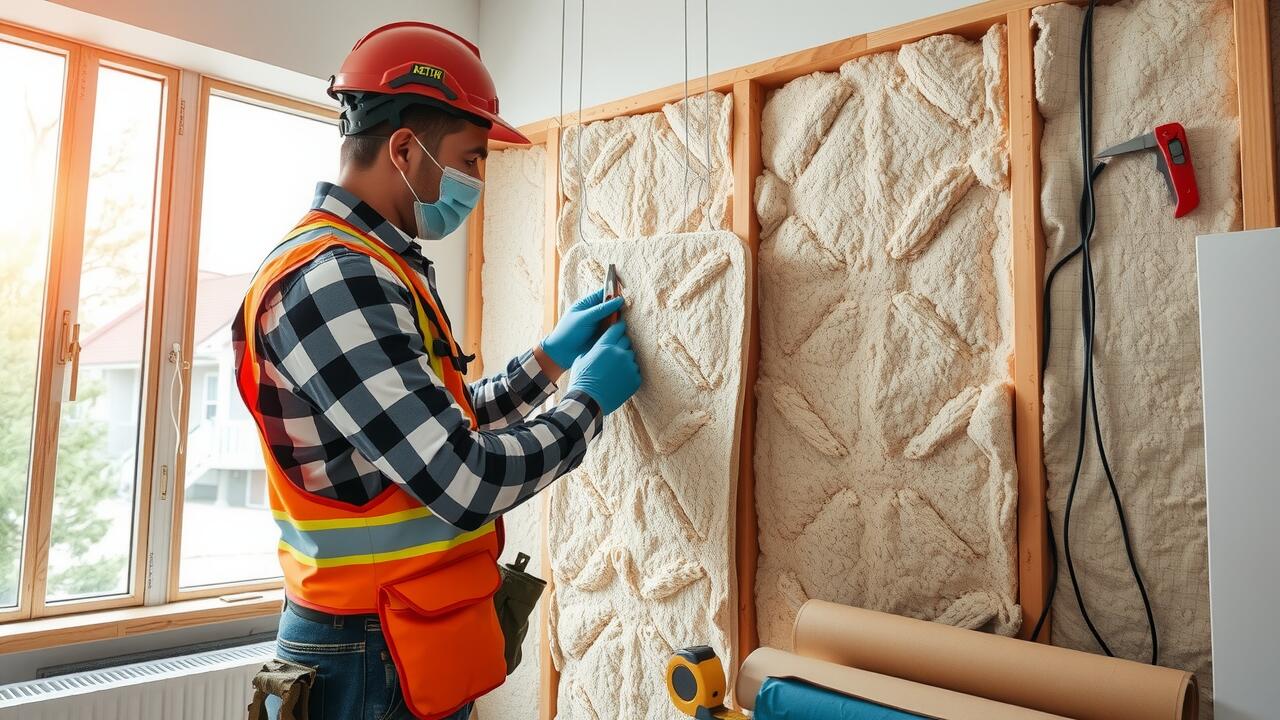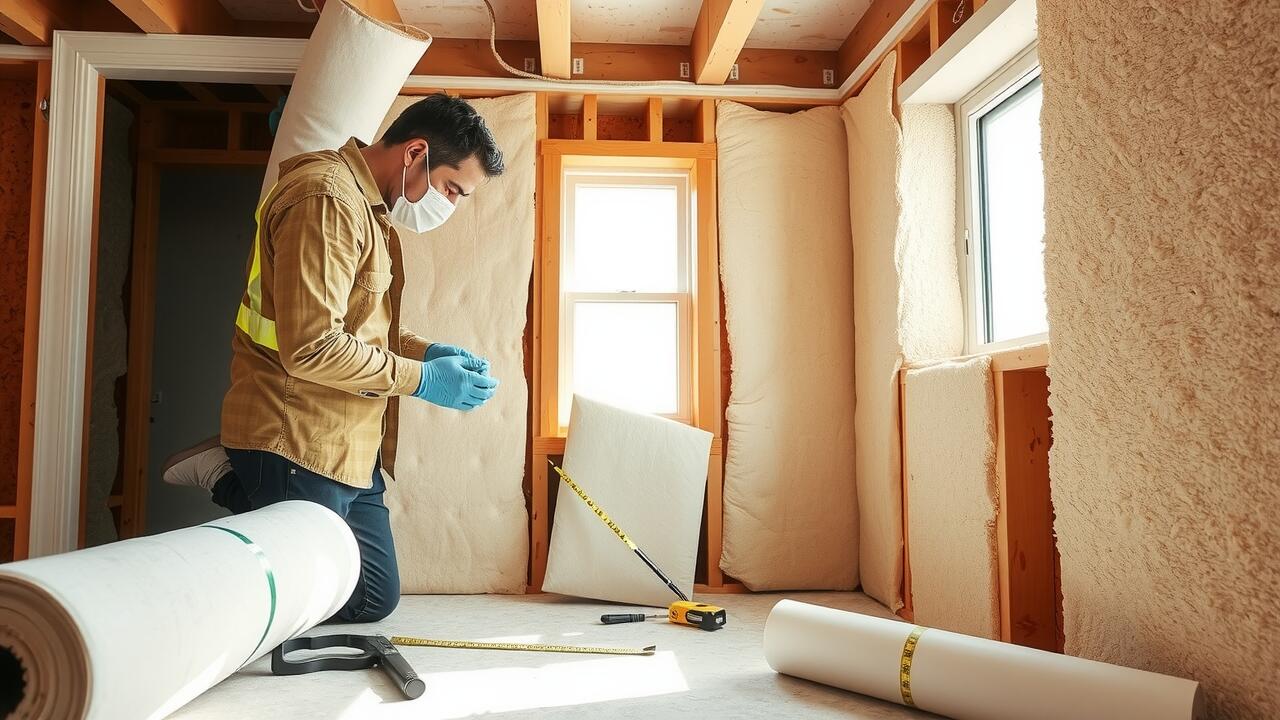
At INSUL8, we take pride in offering top-notch wall insulation services tailored to enhance the energy efficiency and comfort of your home or business. Our expert team utilises advanced materials and techniques to effectively reduce heat loss and minimise external noise, ensuring a more tranquil indoor environment. We assess each property individually, providing bespoke solutions that not only meet your specific needs but also adhere to the highest industry standards. With our commitment to quality and customer satisfaction, INSUL8 is dedicated to helping you achieve a warmer, quieter, and more energy-efficient space through our reliable wall insulation services.
Factors Affecting Installation Costs
Installation costs for wall insulation can vary significantly based on a range of factors. The type of insulation material chosen plays a crucial role in determining price. Options such as mineral wool, polystyrene, and Kingspan panels each come with distinct costs. Additionally, the complexity of the existing structure influences the required labour and materials, as older buildings may need specific adaptations for cavity wall insulation or external wall insulation.
Accessibility of the installation area is another important consideration. For instance, if scaffolding is needed for installation on upper floors or difficult-to-reach sections, costs will naturally increase. The overall size of the area being insulated also impacts expenses; larger spaces require more materials and time. It is essential to factor in potential extras, such as plasterboard for finishing touches or acoustic insulation for improved soundproofing, when estimating the total budget for a wall insulation project.
Breakdown of Expenses
Insulation costs can vary significantly based on several factors. The choice of materials, such as blanket insulation or foam boards, plays a crucial role in determining the overall expense. Using high-quality products, like Knauf insulation or Superglass, may incur higher initial costs but could lead to long-term savings on energy bills. Labour charges also contribute heavily to the budget, particularly if specialised installation techniques are required, such as working with steel joists or integrating underfloor heating.
Additional expenses may arise from preparatory work, such as drywall removal or addressing moisture issues. Installation of vapour barriers might be essential in preventing mould development and ensuring thermal efficiency. The type of property influences financial considerations as well; for instance, older buildings may not meet current building regulations, necessitating extra modifications. Moreover, tools and materials like screws and adhesive can add to the overall project costs, depending on the specifications outlined in the insulation plan.
Installation Process for Wall Insulation
The installation of wall insulation involves several critical steps to ensure maximum effectiveness and energy efficiency. Initially, it is essential to assess the type of wall being insulated, whether it is a stud wall or a solid concrete structure. This will determine the appropriate insulation materials to be used, such as mineral wool, polyurethane foam, or fibreglass batts. Once the materials are chosen, contractors typically prepare the area by removing any existing finishes and ensuring that the surface is clean and dry. Proper framing and installation of battens may be required to support certain insulation types.
Following the preparation phase, the insulation material can be installed. For stud walls, the insulation should fit snugly between the frames without gaps to prevent draughts and minimise heat loss. In the case of external walls, a reflective foil or bubble wrap may be applied for added thermal efficiency. After insulation placement, ensuring a vapour barrier is installed will prevent moisture issues in the future. This is especially important in regions prone to heavy rain or humidity, where damp can lead to serious structural problems.
Steps to Ensure Effective Application
For a successful wall insulation application, preparation is key. Prior to installation, ensure that the walls are clean and dry. Remove any loose paint or debris, as this can impact the adhesion of materials. When working with timber-framed structures, inspecting for any signs of rot or damage is crucial, as these issues must be addressed before insulation is applied. The choice between different insulation types, such as batt insulation or spray foam, depends on the specific needs of the building and its structure. Properly fitting the insulation within the wall cavities can significantly enhance performance by minimising air gaps.
Additionally, ensuring that the installation adheres to local regulations and standards is important for performance and future inspections. Using protective gear during installation safeguards against airborne particles and chemicals. After installation, the use of vapour barriers can prevent moisture issues, which are particularly problematic in regions with high humidity. Following up with plasterboards or other wall finishes will help create a durable, insulated barrier that hydrates the indoor climate effectively. Implementing these steps will lead to improved energy efficiency and occupant comfort within the space.
Addressing Moisture and Damp Issues
Moisture and damp issues pose significant challenges in wall insulation, requiring careful consideration during both installation and ongoing building maintenance. High relative humidity in a property can lead to interstitial condensation, which occurs when warm, moist air comes into contact with cooler surfaces. This can result in mould growth, compromising indoor air quality and damaging materials like gypsum plaster. To mitigate such risks, it is essential to incorporate suitable vapour barriers within the insulation system. These barriers help manage moisture movement, preserving the integrity of the building structure and enhancing thermal comfort.
Selecting the right insulation material plays a pivotal role in combating dampness. Options such as rock wool and closed-cell foam not only provide effective thermal insulation but also have excellent sound absorption properties. Furthermore, these materials can be coupled with proper framing techniques and a robust vapour management strategy. Regular inspections of areas prone to moisture intrusion, such as window frames and roofing, are necessary. Addressing potential sources of dampness, including poorly insulated electrical wires or fixtures, is crucial for maintaining a dry and healthy environment in residential or commercial properties.
Importance of Vapour Barriers
Vapour barriers play a crucial role in maintaining the integrity of wall insulation, particularly in semi-detached houses and bungalows. These materials, often made from polyethylene or aluminium foil, prevent moisture from penetrating the insulation layer. Without a proper vapour barrier, condensation can form, leading to mould growth and degradation of the insulation’s thermal conductivity. This not only compromises the performance of your insulation but can also create health issues for occupants due to damp and mould spores affecting the air quality.
In bathrooms and kitchens, where humidity levels fluctuate frequently, the installation of effective vapour barriers is even more essential. Using a self-adhesive or thermoset material can facilitate easier application around plumbing and electrical sockets. Proper sealing ensures that moisture does not seep through, protecting floorboards and addressing potential damp issues. Moreover, considering the extensive range of vapour barriers available, selecting the right type tailored to your specific home improvements will maximise your investment and enhance temperature regulation throughout the year.
FAQS
What factors can affect the cost of wall insulation installation?
Several factors can influence installation costs, including the type of insulation material chosen, the size and condition of the walls, accessibility, and local labour rates.
What are the main expenses involved in wall insulation?
The breakdown of expenses typically includes the cost of insulation materials, labour charges, any necessary permits or inspections, and potential additional costs for repairing or preparing walls prior to insulation.
What is the installation process for wall insulation?
The installation process generally involves assessing the walls, selecting the appropriate insulation material, preparing the area, installing the insulation, and finally sealing and finishing the walls to ensure optimal energy efficiency.
How can I ensure effective application of wall insulation?
To ensure effective application, it is important to follow the manufacturer's guidelines, use the correct insulation type for your specific walls, ensure proper sealing to prevent air leaks, and consider hiring a professional if unsure about the installation process.
Why is addressing moisture and damp issues important in wall insulation?
Addressing moisture and damp issues is crucial as excess moisture can lead to insulation degradation, mould growth, and reduced energy efficiency. Proper management, including the installation of vapour barriers, helps to mitigate these risks.




